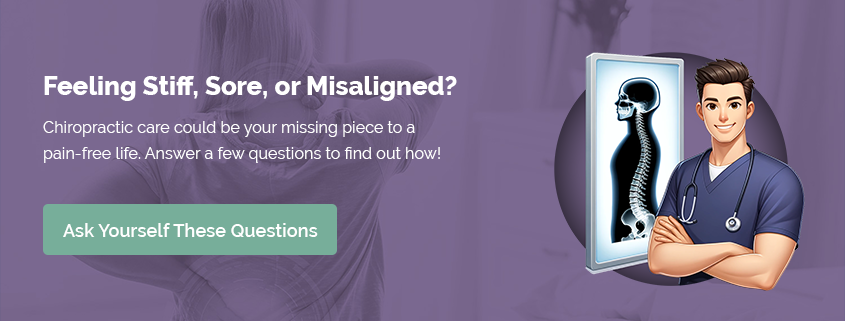What to Expect at the Chiropractor – A First-Timer’s Guide
There are a lot of myths surrounding chiropractic care, so you may be nervous about booking your first appointment – but you shouldn’t be!
There are so many benefits to a chiropractic adjustment that it would be a crime against your overall health to miss out on a visit due to nerves and misinformation. We’re here to help you find out what to expect at the chiropractor during your first visit – from the physical exam to what the chiropractor will actually do – and you’ll be ready to take the plunge without fear.
Benefits of a Chiropractic Adjustment
There are a lot of benefits when it comes to receiving chiropractic treatments. Of course, you probably know it’s good for neck pain and back pain, but it can also provide pain relief for headaches and sciatica. A visit to the chiropractor can even help rebuild muscle strength in those who have suffered from strokes.
A trusted chiropractor is also good for relieving musculoskeletal-related chronic pain or pain associated with injuries (ex. a previous car accident). It can lower your blood pressure, too.
In addition to all of the conditions that can be treated, chiropractic care can also include posture and exercise education to help you avoid future misalignment, properly build muscle tone, and avoid lower back pain.
Your First Chiropractic Appointment
The initial visit to a chiropractor’s office will be similar in many ways to other health care provider visits – you’ll supply information about your medical history, overall health, and undergo an exam. There will also be a routine physical exam and a more focused chiropractic exam.
Chiropractic Exam and Initial Consultation
During your consultation, the chiropractor will ask if you have any soreness or injuries. If you are experiencing pain, they’ll ask how the pain feels – sharp, dull, or throbbing. They’ll also want to know if it’s continuous, if it comes and goes, and what triggers it or makes it worse.
To gauge the best treatment for affected areas, they’ll do a posture analysis and perform an exam where they test your range of motion while asking you to move certain ways. They may also take x-rays, examine your muscle tone and muscle strength, or assess your nervous system. X-rays and deep diagnostic tests are typically only required for a good reason, such as recent injury or trauma or a possible spinal deformity. Most issues – such as soft tissue damage, torn muscles, or non-complex spinal misalignments – will not require an x-ray.
Developing a Treatment Plan
Once your chiropractic exam is completed, your chiropractor will develop a treatment plan with you. You and your provider will discuss how often you should attend chiropractic adjustments. This will be decided based on the severity of any soft tissue damage, soreness, or injuries you have. Likely, your visits will be more frequent earlier into your chiropractic care and then diminish as time goes on.
While you develop a treatment plan with your chiropractor, make sure to ask questions, and take an active role in determining what will work best for you. The best relationship between a health care provider and a patient is based on communication and trust.
First Time Chiropractic Treatment
After the exam is done and treatment has been settled on, you’ll receive your first chiropractic treatment session. This will likely be an alignment or spinal manipulation. Your chiropractor will place you in specific positions based on your affected areas, and will treat with manual manipulation of your spine, other joints, soft tissue and ligaments.
Typically, the chiropractor will have you lying face down on a chiropractic table that is cushioned for your comfort. The chiropractor will apply pressure to your joints which may cause popping or cracking sounds – but don’t worry. These sounds are normal and come from pressure being released from the joints. Afterward, you may feel some soreness, but nothing more than the same kind of soreness you’d feel post-workout.
After your visit, you’ll likely notice less tension in your muscles and joints while experiencing more freedom of movement. Many people report feeling much better after a chiropractic adjustment since it relieves pressure, realigns the body, and reactivates your nervous system.
Book Your First Chiropractic Visit With Meridian
At Meridian HealthCare, we believe in comprehensive, whole-person health, and a big part of that is utilizing quality chiropractic care. Our expert health providers are prepared to answer any questions you might have – just reach out to book an appointment and we’ll help you find your balance again.





